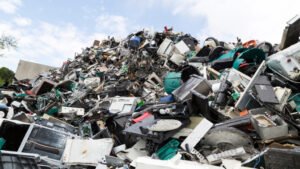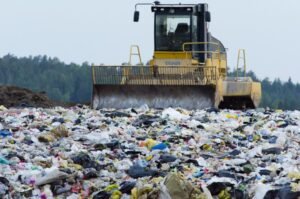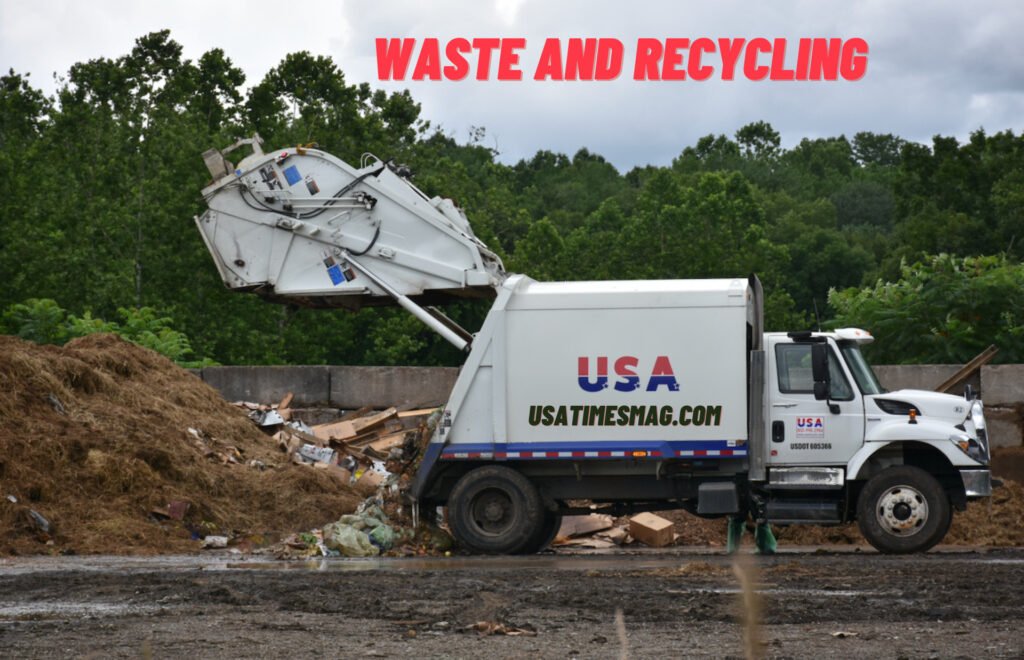The United States faces a significant challenge in managing waste and recycling, with evolving policies, technological advancements, and societal shifts shaping the landscape as of 2024. This comprehensive overview examines the current state of USA Waste and Recycling generation and practices, legislative frameworks, technological innovations, and future prospects in the U.S.
Table of Contents
ToggleCurrent State of Waste Generation and Recycling

As of 2024, the USA Waste and Recycling generates approximately 300 million tons of municipal solid waste (MSW) annually. This figure underscores the pressing need for effective waste management strategies. Despite efforts to promote recycling, the national recycling rate remains around 32%, indicating substantial room for improvement.
Plastic Waste: A Persistent Challenge

Plastic waste continues to be a significant concern. In 2018, the U.S. produced 35.7 million tons of plastic waste, accounting for 12.2% of total MSW. However, only 8.7% of this plastic was recycled, highlighting inefficiencies in the recycling system. The majority of plastic waste ends up in landfills or is incinerated, contributing to environmental pollution and greenhouse gas emissions.
Legislative and Policy Developments
Recent years have seen significant legislative efforts aimed at improving waste management and recycling practices:
- National Strategy for Reducing Food Loss and Waste and Recycling Organics: In June 2024, the Biden-Harris Administration released this strategy to reduce food loss and waste by 50% by 2030. The plan emphasizes prevention, recycling, and supportive policies to achieve its objectives.
- Phasing Out Single-Use Plastics: In July 2024, the administration announced plans to eliminate single-use plastics from federal operations by 2035, starting with food service items by 2027. This initiative aims to reduce plastic pollution and promote sustainable alternatives.
- Extended Producer Responsibility (EPR) Legislation: Several states have introduced EPR laws requiring manufacturers to manage the end-of-life disposal of their products, particularly focusing on packaging materials. These laws aim to shift the responsibility of waste management from consumers and municipalities to producers, encouraging the design of more sustainable products.
Technological Innovations in Waste Management
Advancements in technology are playing a crucial role in transforming waste management and recycling processes:
- Advanced Recycling Technologies: Chemical recycling methods are being developed to break down plastics into their original monomers, allowing for the production of new plastics without degradation in quality. However, the effectiveness and environmental impact of these technologies are subjects of ongoing debate.
- Battery Recycling Initiatives: In response to the growing electronic waste problem, the Department of Energy announced a $14 million initiative to establish over 1,000 consumer battery collection sites. This effort aims to recover valuable materials from batteries and reduce environmental hazards associated with improper disposal.
Community Engagement and Education
Public participation is vital for the success of USA Waste and Recycling programs. Educational campaigns are being launched to inform citizens about proper recycling practices, the importance of waste reduction, and the environmental impacts of improper disposal.
Community-based initiatives, such as composting programs and zero-waste events, are gaining traction, encouraging individuals to take active roles in minimizing waste generation.
Corporate Responsibility and Circular Economy
Businesses are increasingly adopting sustainable practices, recognizing the economic and environmental benefits of a circular economy. Companies are investing in eco-friendly packaging, product take-back programs, and resource-efficient manufacturing processes.
Collaborations between corporations, non-profits, and government agencies are fostering innovation and driving systemic changes in waste management and recycling.
Challenges and Barriers

Despite these initiatives, several challenges persist in the USA Waste and Recycling sector:
- Contamination in Recycling Streams: High contamination rates in recycling bins reduce the quality of recyclable materials, leading to increased processing costs and lower recycling rates.
- Economic Viability: Fluctuating markets for recyclable materials can make recycling economically unfeasible, leading to more waste being diverted to landfills.
- Public Awareness and Participation: Effective recycling requires active participation from the public, which is hindered by a lack of awareness and education on proper recycling practices.
Future Outlook
Looking ahead, several trends and developments are expected to shape the future of waste and recycling in the U.S.:
- Circular Economy Models: There is a growing emphasis on adopting circular economy principles, which focus on designing out waste and keeping products and materials in use for as long as possible.
- Increased Federal Funding: The federal government is expected to continue investing in recycling infrastructure and education programs to improve national recycling rates. For instance, in September 2024, the EPA announced $117 million in grants to advance recycling infrastructure and prevent food waste.
- Global Collaboration: The U.S. has expressed support for international efforts to reduce plastic pollution, including participating in negotiations for a global treaty aimed at curbing plastic production and waste.
Conclusion
The USA Waste and Recycling landscape in the United States is undergoing significant transformation, driven by policy initiatives, technological advancements, and a growing societal commitment to sustainability. While challenges remain, concerted efforts at the federal, state, and local levels, coupled with active participation from industries and consumers, are paving the way toward a more sustainable and efficient waste management system.
FAQs about USA Waste and Recycling
What items are commonly accepted in curbside recycling programs?
Most curbside recycling programs accept materials such as paper, cardboard, glass bottles, aluminum cans, and certain plastics labeled with recycling symbols 1 (PET) and 2 (HDPE). However, acceptance varies by locality, so it’s essential to consult your local recycling guidelines.
Why are certain plastics not recyclable through curbside programs?
Plastics labeled with recycling symbols 3 (PVC), 6 (polystyrene), and 7 (other) are often excluded from curbside recycling due to challenges in processing and limited market demand for recycled materials. These plastics may require specialized recycling facilities.
How can I properly dispose of electronic waste (e-waste)?
E-waste, including items like old computers, smartphones, and televisions, should not be placed in regular trash or curbside recycling bins. Many communities offer designated e-waste collection events or have drop-off locations at electronics retailers. Additionally, some manufacturers provide take-back programs for their products.
What are the environmental benefits of recycling?
Recycling conserves natural resources, reduces energy consumption, and decreases greenhouse gas emissions. For example, recycling one ton of aluminum cans conserves more than 152 million Btu, the equivalent of 1,024 gallons of gasoline or 21 barrels of oil consumed.
How has the U.S. recycling system been affected by international policies?
In 2018, China implemented the “National Sword” policy, significantly restricting the import of certain recyclables due to contamination concerns. This led to challenges in the U.S. recycling industry, prompting investments in domestic recycling infrastructure and a reevaluation of waste management practices.
- What steps can individuals take to improve recycling practices?
- Educate Yourself: Understand your local recycling guidelines to ensure proper sorting of recyclables.
- Reduce Contamination: Clean and dry recyclables before placing them in the bin to prevent contamination.
- Reduce and Reuse: Prioritize reducing waste and reusing items before considering recycling.
- Participate in Community Programs: Engage in local recycling initiatives and support policies that promote sustainable waste management.

